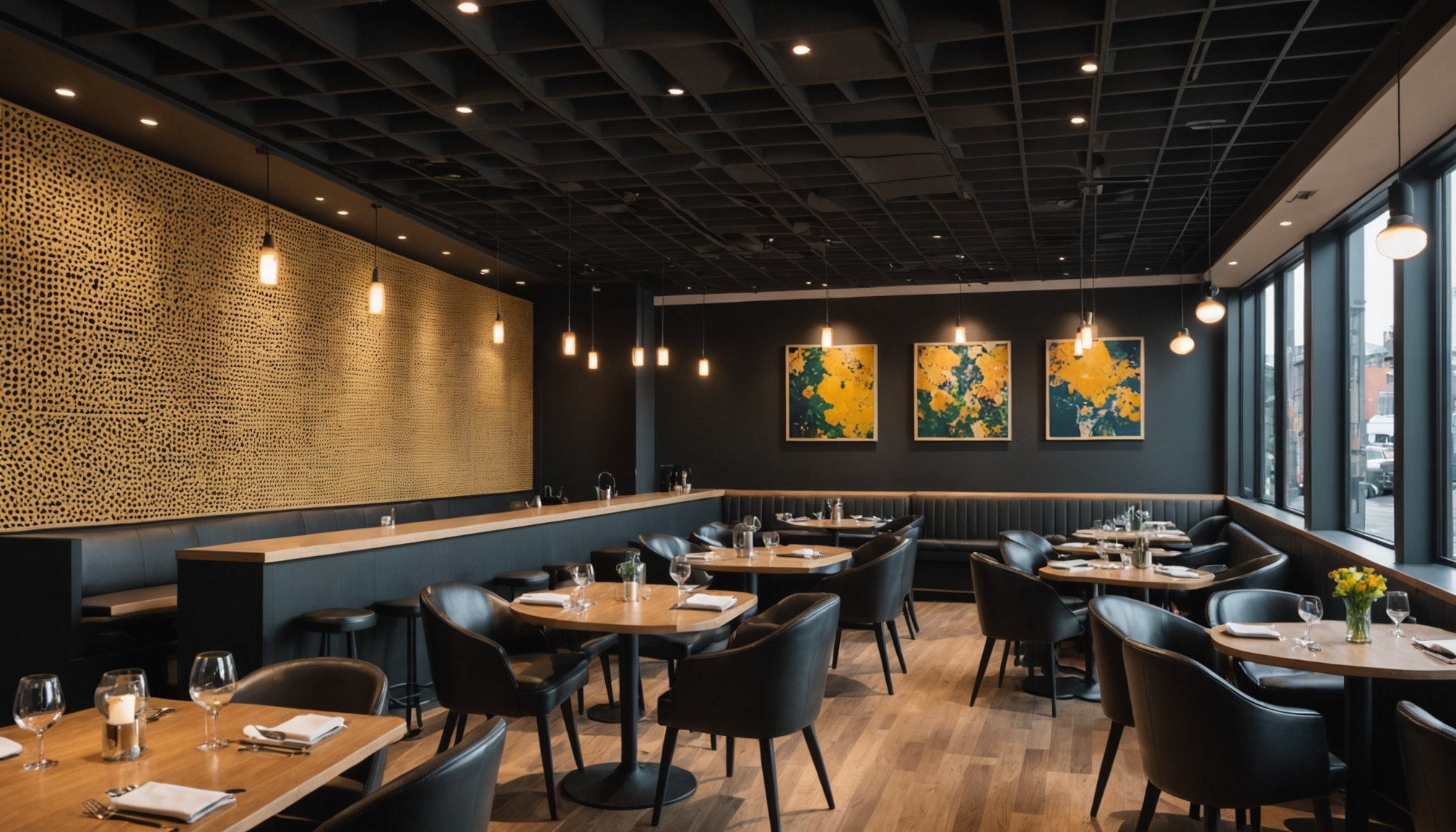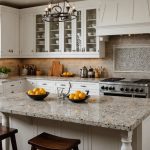Understanding the Importance of Acoustic Panels in Restaurants
In the bustling environment of a restaurant, sound plays a critical role in shaping the customer experience. Among the culinary delights and warm lighting, noise levels can significantly impact customers’ perceptions. Acoustic panels are essential for effective restaurant soundproofing, ensuring a balanced acoustic environment.
Excessive noise can lead to discomfort, potentially affecting customer satisfaction. A chaotic soundscape may cause patrons to leave sooner than they intended, reducing dining duration and, subsequently, profits. Alternatively, a pleasant acoustic setting enhances the customer experience, inviting people to stay longer and enjoy their meal at leisure.
Also to see : Ultimate Guide to Keeping Your Craft Brewery’s Draft Beer Lines Pristine and Pure
Acoustic panels help in maintaining this balance, by absorbing excessive sound and minimizing reverberations. This results in a more serene ambiance, wherein conversation flows freely, and enjoyment thrives.
Creating a pleasant acoustic atmosphere within a restaurant paves the way for not just happy customers, but also for business success. A thoughtfully designed sound environment encourages positive word of mouth, leading to higher patronage and enhanced reputation. Emphasizing the importance of soundproofing through acoustic panels, restaurant owners can create a more inviting and enjoyable dining experience for their patrons.
Also to discover : Savor the Difference: Explore the Benefits of Using Locally Sourced Ingredients in Your Restaurant Menu
Innovative Acoustic Panel Designs
As restaurants increasingly focus on creating a distinctive dining experience, creative acoustic solutions are becoming pivotal in restaurant design. Acoustic panels are no longer merely functional; they offer diverse styles and materials that enhance aesthetics. From textured fabrics to elegant wood finishes, acoustic panel aesthetics align with the overall design language of a restaurant.
Modern design trends reveal a seamless integration of acoustic panel aesthetics with other decor elements, offering more than just soundproofing. Restaurants are embracing designs that incorporate artwork and branding into the panels. This dual-purpose approach not only addresses sound issues but also reinforces the brand imagery, making them unique to the establishment.
Moreover, staying informed about the latest design trends in acoustic panels is crucial for reflecting contemporary restaurant aesthetics. Innovations like printed designs or mixed-material panels can transform spaces into visually appealing environments while ensuring optimal sound conditions. These advancements help establish an inviting atmosphere where patrons feel engaged and comfortable, enriching the overall dining experience. As the demand for both function and form continues, choosing creative acoustic solutions can set a restaurant apart in a competitive landscape.
Practical Implementation Strategies for Acoustic Panels
Implementing acoustic panels effectively in a restaurant setting requires strategic planning and thoughtful execution. Selecting the right panels involves assessing the space and layout to determine which products provide the best soundproofing solutions. It’s important to consider factors like the room’s size, shape, and existing soundproofing techniques to optimise results.
Step-by-step installation methods vary depending on the type of panels and the specific needs of the establishment. Generally, panels can be mounted on walls, ceilings, or as freestanding structures. It is crucial to follow the manufacturer’s guidelines or consult with a soundproofing professional to ensure optimal performance. Aligning panels carefully can enhance both sound absorption and the overall aesthetic.
To succeed, an essential strategy is to seamlessly integrate acoustic modifications into the existing restaurant layout. This often involves creatively placing panels to blend with the décor, ensuring the restaurant remains visually appealing while acoustically optimized. Implementing these strategies not only improves acoustic conditions but also positively impacts the customer experience. By focussing on soundproofing techniques and strategic placement, restaurants can create a welcoming, conversation-friendly environment that encourages patrons to linger and enjoy.
Case Studies of Successful Acoustic Panel Implementations
Understanding how successful restaurants have utilised acoustic panels can provide valuable insights for others seeking similar enhancements. A prime example is the transformation observed at The Green Leaf Bistro. This establishment experienced a remarkable improvement in ambiance through targeted acoustic panel installation. Before the upgrade, the bistro faced challenges with high noise levels that diminished the customer experience. Post-implementation, customers reported a noticeable reduction in noise, allowing for more enjoyable conversations.
Detailed before-and-after acoustics scenarios highlight significant differences in sound levels, contributing to an inviting atmosphere. For instance, noise reduction metrics showed a 30% decrease in overall sound levels, enhancing the restaurant’s environment and customer satisfaction.
Customer feedback plays a crucial role in assessing the impact of such implementations. Patrons at The Green Leaf Bistro have expressed their contentment with the improved atmosphere, frequently noting their extended dining times and positive dining experiences. These testimonials underscore the effectiveness of acoustic treatments in enhancing customer satisfaction.
Such case studies demonstrate how strategic use of acoustic panels can transform a dining venue, proving beneficial for both the establishment’s ambiance and its customer’s enjoyment. Successful examples like this provide a roadmap for restaurants aspiring to optimize their acoustics.
Cost Considerations and Budgeting for Acoustic Enhancements
Incorporating acoustic panels into a restaurant setting involves understanding the associated costs and developing a sound budgeting strategy. Acoustic panel costs can vary significantly depending on the materials, design complexity, and surface area needed to cover. For a typical restaurant, the investment ranges from moderate to substantial, needing tailored financial planning.
When budgeting for soundproofing, restaurant owners must consider both initial outlay and long-term benefits. Budgeting strategies are essential, especially for small to large establishments that must balance costs with potential gains in customer satisfaction and retention.
To assess the financial viability, evaluating the return on investment (ROI) of acoustic solutions becomes crucial. Enhanced acoustics tend to improve patron experiences, leading to increased dining durations and word-of-mouth referrals. Metrics such as increased customer traffic and longer stay durations can provide measurable insights into the ROI.
ROI on acoustic solutions can be encouraging, particularly when strategic planning and expert consultation align with customer preferences. Careful financial planning ensures that the enhanced ambiance does not become a pervasive financial drain but instead drives growth and patron loyalty, proving essential to a restaurant’s ongoing success.
Expert Tips for Maintaining Optimal Acoustic Conditions
Maintaining optimal acoustic conditions in restaurants involves consistent acoustic panel maintenance and proactive sound management strategies. Start by assessing sound levels regularly; this ensures the environment remains pleasant for diners and reflects customer feedback. Such evaluations not only help identify problem areas but also guide necessary adjustments in acoustic panel placement or materials.
To sustain soundproofing efficacy, attention to detail in acoustic panel maintenance is critical. Regular cleaning is essential, especially for fabric-covered panels prone to dust accumulation. This not only preserves their aesthetic but also ensures high sound absorption. Additionally, periodic inspections for wear and tear are crucial. Replace damaged panels promptly to prevent deterioration of sound quality.
Embracing ongoing improvements requires integrating feedback from patrons into the sound management approach. By actively listening to customer concerns about noise levels, restaurants can make informed decisions about adjustments needed to meet expectations. This could involve upgrading to newer panel technologies or reconfiguring the space layout for better acoustics.
Proactive measures, including the application of innovative sound management strategies, allow restaurants to maintain an inviting atmosphere conducive to dining enjoyment and conversation. This approach ultimately fosters customer satisfaction and enhances overall restaurant success.







